

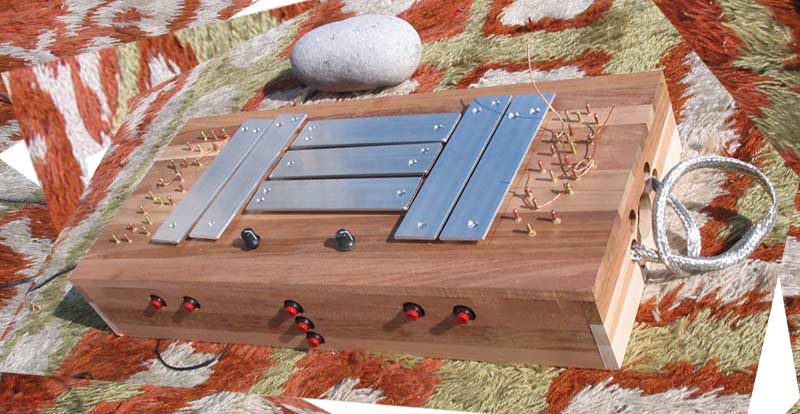
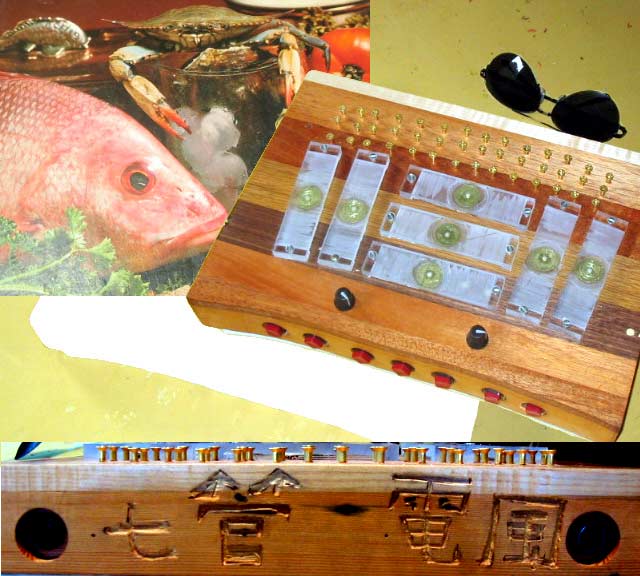

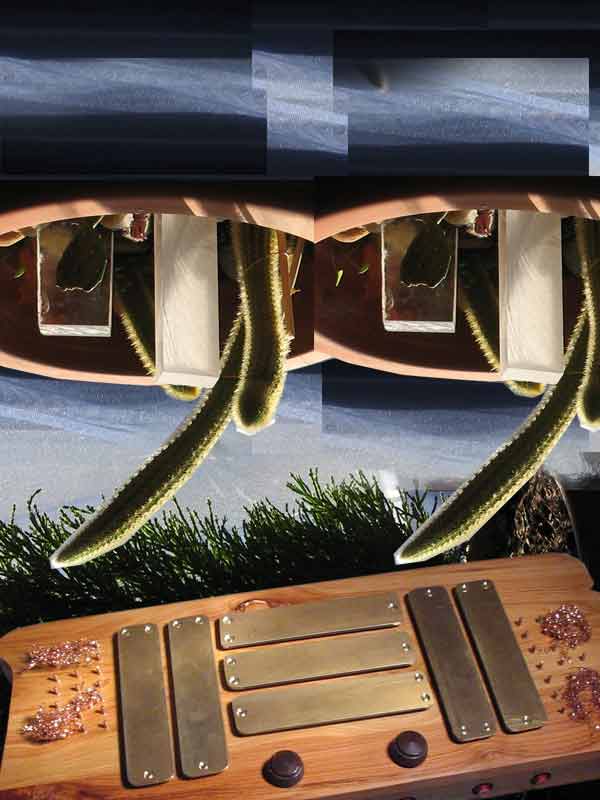


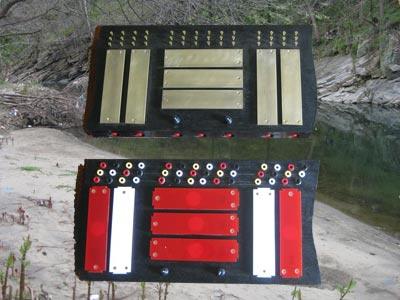

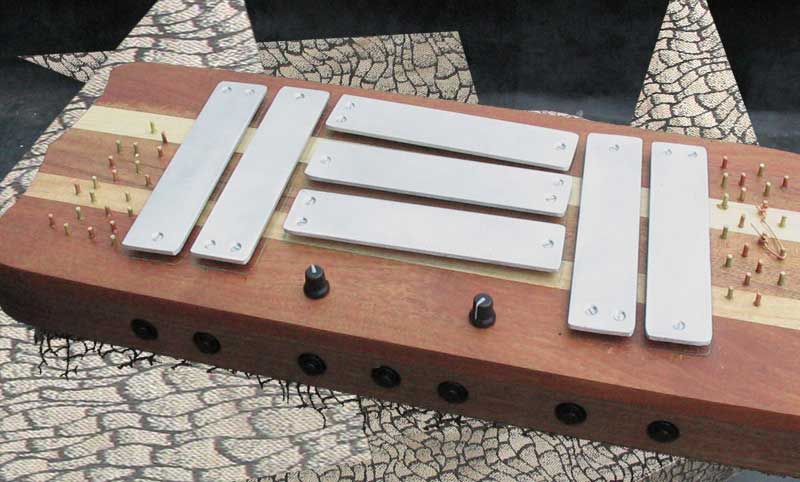
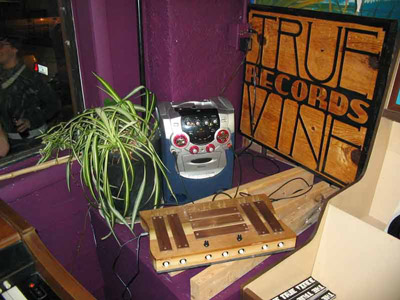
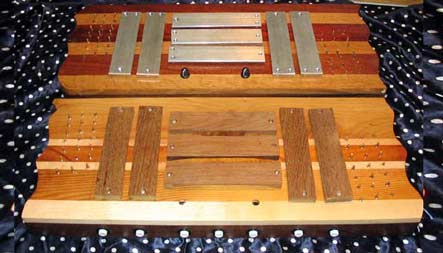
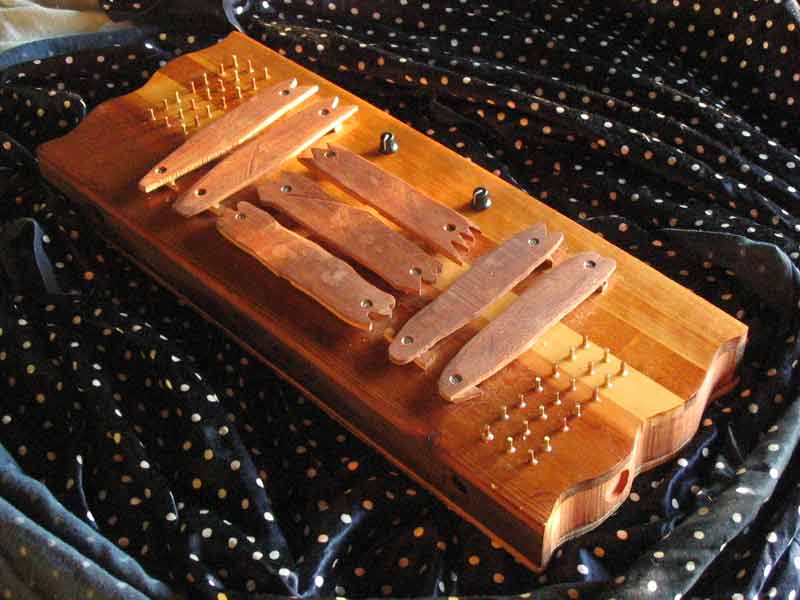
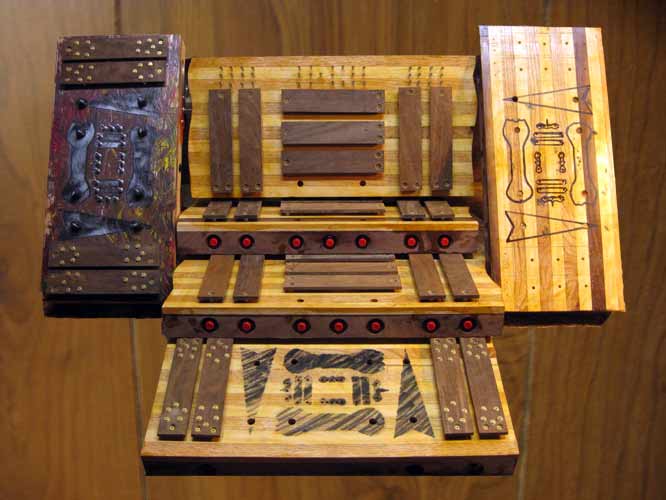
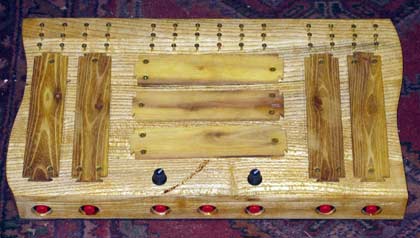
















Ciat-Lonbarde |
|
| Can you explain
what those copper rods do? Inside the circuit board, there are six nodes associated with each bar: -oscillator glitch left in -oscillator glitch right in -fm modulation in -essential tone out -bar pressure transfer out -bar releasal transfer out There are 7 bars so there are 42 nodes. When you weave wire over them all these little functions get programmed, so to speak, by your wire configurations. This is programming an analog brain (nabra). Is it possible to set every note of the bars like intended or just randomly? Each note owns a unique button controlling a unique tank, which is also known as analog storage scroll. So you can set each bar separately. When I play the instrument, I find that I am constantly rediscovering new tunings, and if I don't like a note I scroll through a few random possibilities for that note and then play in the thus mutated tuning. This is like selective gene mutation. Yes, I am looking for some simple exercises to teach children the Sidrassi? Well there's one that I can think of right off the top of my head. It is how to digest all of musical genres and scales into your own subconscious. The exercise does not allow you to say "I will play mysterious indian music" or "I will do a ragtime pattern now", in fact your children have no preconceptions about what "type" of music they will play. Plug the organ in and disconnect all modulations and put it into simple tone mode, put pitch at midrange or so. Now play a random tuning and focus on areas that you seem drawn to. Meditate on them and you will begin to hear connotations, perhaps a gothic church with demented organ music, or a smoky free jazz parlor, or perhaps a zen pagoda. The irrational tunings that you are currently using will sift through the maze of your brain and trigger what is in there. This is the inductive mood. Is there anything you haven't said? Well one thing I was just realizing today about the Sidrassi is that it is battery-power ready, so you can use a solar-powered battery system with it. |
The Sidrassi Organus has seven
pressure sensitive bars, which you
press to express the seven tones within. Use the
buttons on the front to scroll through tunings, which then remain
set to what you chose. There
is a master pitch knob, as well as a master chaos knob. There are
42 nodes to touch or weave with wire, making weird and unique tone and
gesture combinations.
Press a bar, its sound
goes left, release it, its sound goes right; it has a
stereo influence. The Sidrassi is an Organ, designed to reflect
the
glory of god with pure triangular voices. But it also allows
exploration of the Devils' Tone, which is
irrational pitch relationships achieved through analog modulations. The
instrument runs on transformer
("wall-wart"). The standard model uses wooden bars, but please
inquire for other possibilities. Unbraided 无编 - Ming 鸣鸣 Ming - Sereni 幽静 - Ben Franklin 本法染克林 - Cryst 晶鸟 Bird At 12:40 in this extended Sejayno soundtrack, there is a sample of me playing conch shell thru the brass bars. Tonal Comparison by tapping bars of different materials: SID-BRASS ($100 extra) SID-PLASTIC SID-WOOD The Sidrassi Can be test-played at True Vine Records, 3544 Hickory Ave, Baltimore. "Got the Sidrassi Organus today, spent five hours straight playing it, messed up my knees sitting cross-legged. The wooden keys are remarkable, in that the transducers pick up faint scrapes of the fingernail when going against the wood grain, fusing these haptic timbres with that of the wave output. A smattering of reverb really brings it out. Thank you for talking me out of ordering metal triggers. I have a bit of an obsession with Baroque keyboard ornamentation. Now I have a wonderful tactile new instrument to lay down jittery little trills, mordants, and appoggiaturas. " |